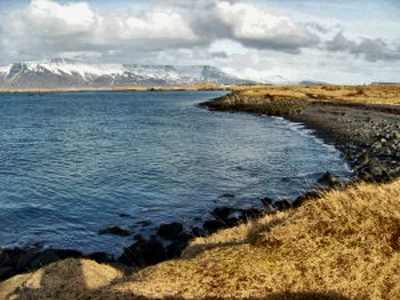Was it walruses that lured the first Scandinavian settlers to Iceland and Greenland in the Viking Age? In an article now published in the journal World Archaeology, an interdisciplinary team of scientists has presented new insights into the Viking Age and mediaeval trade in walrus ivory.
from Old Norse saga literature It has long been known that art objects made of walrus ivory were considered very valuable in the Middle Ages. In the Króka-Refs saga, for example, a Greenlander sends the Norwegian king not only an adult polar bear as a gift but also a chess set carved from walrus tusks and a walrus skull and tusks decorated with gold inlays. The saga states that this was “a most precious piece”. Belts and sword hilts made of walrus ivory are also mentioned in sagas as particularly valuable objects. Some texts also go into great detail about the hunt for individual walruses. Ropes made from walrus skin and walrus tusks are mentioned as Greenlandic trade goods in the so-called Norwegian King’s Mirror, a text from around 1260. This trade in Europe is also well documented archaeologically: remains of walrus ivory have been found in important Viking Age and mediaeval trading cities such as Dublin, Trondheim, Bergen, Sigtuna, and Lund.
It may therefore have been the prospect of valuable ivory that first lured people to Iceland in the 9th century and then to Greenland a good hundred years later. In any case, new finds of walrus bones during archaeological excavations in various places in Iceland, as well as place names and mediaeval legal texts, suggest that the colonies of animals that existed in Iceland at the time were hunted there at the latest from the beginning of settlement, not only for the sake of the tusks but also for the meat and skins. One Viking-era building—discovered during excavations in the centre of what is now the capital city of Reykjavík—even had walrus bones built into an outer wall, which must have been clearly visible to arriving visitors. But soon the trade in walrus ivory may have played only a minor role in Icelandic society: the animals were apparently hunted so excessively that the local populations were wiped out.
It’s different in Greenland: walrus bones have been found in almost all previous excavations in both the eastern and western settlements. Presumably, the hunt was organised collectively: in the summer, ships sailed far north to Disko Bay (then called Norrseta) on the west coast of Greenland to hunt for the large population of walruses there. Since the cargo space of the ships was limited, probably not the meat of the animals was taken back but only the most valuable part, i.e., the tusks. These remained Greenland’s main exports well into the 14th century, while wool and fish were the main exports from Iceland in the Middle Ages. Unlike Icelandic trade, Greenlandic trade was based on the export of a luxury good. Part of the reason for the later decline of Norse settlements in Greenland could therefore have been that the demand for walrus ivory decreased in the late Middle Ages.
A newly developed method is now to be used to determine from which arctic regions in Europe Viking Age and mediaeval walrus ivory came. Lead isotopes from material samples are analysed. Because the walruses, which mainly eat mussels, store lead isotopes in their bones and teeth through their food and environmental influences, which are so characteristic of the respective regions of origin that it is possible to distinguish, for example, walrus ivory from Greenland, Iceland, and the White Sea, To date, only a very small number of samples have been analysed using this method, and the researchers emphasise that more extensive investigations will be needed to arrive at meaningful results. However, they are optimistic that it will soon be possible to unambiguously assign walrus ivory from Greenland to different hunting sites there. This should provide new insights into the nature of trading in this luxury good in the Viking Age and the Middle Ages. Perhaps this will also corroborate the thesis that the settlement of both Iceland and Greenland was inextricably linked to walrus hunting in these newly discovered areas.

